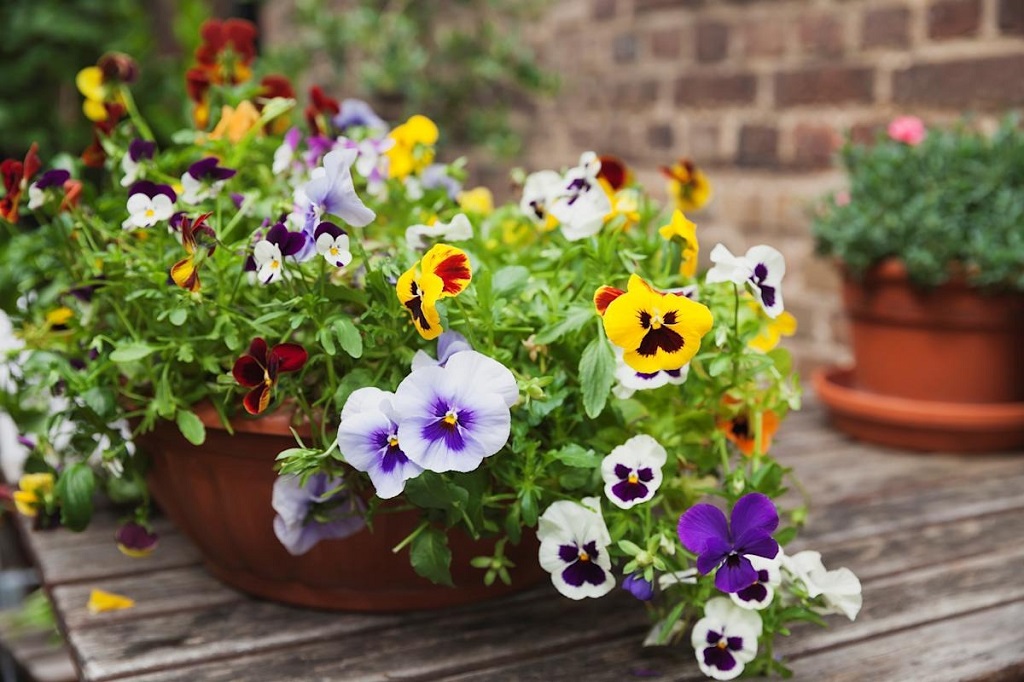
Pansies (Viola × wittrockiana) are beloved for their vibrant colors, delicate petals, and ability to brighten gardens, containers, and landscapes even in cooler seasons. These hardy annuals are known for their cold tolerance, making them a favorite for fall, winter, and early spring displays. However, extreme temperatures—whether too cold or too hot—can threaten their survival. If you’re wondering, “What temperature will kill pansies?” this comprehensive guide explores the ideal temperature range for pansies, the thresholds that can damage or kill them, and practical tips to protect your plants. Let’s dive in to ensure your pansies thrive year-round!
Understanding Pansies and Their Temperature Preferences
Pansies are cool-season flowers, meaning they flourish in milder conditions and can withstand light frosts, unlike many other annuals. Originating from hybrid crosses of wild violets, pansies have been bred for resilience and beauty, making them a go-to for gardeners in temperate climates. Their ideal temperature range for optimal growth is between 45°F and 65°F (7°C to 18°C). Within this window, pansies produce abundant blooms, maintain healthy foliage, and resist stress.
However, pansies aren’t invincible. Both freezing cold and scorching heat can push them beyond their limits. Knowing these thresholds is key to keeping your garden vibrant. Below, we’ll break down the effects of low and high temperatures and how to safeguard your pansies.
Cold Temperatures: When Do Pansies Start to Suffer?

Light Frost Tolerance
Pansies are remarkably cold-hardy and can often survive light frosts, with temperatures dipping to 28°F to 32°F (-2°C to 0°C) for short periods. In fact, a light frost may even intensify their colors, giving blooms a vivid, jewel-like appearance. During these mild chills, the plant’s cells release sugars and other compounds to protect against freezing, a natural adaptation for cool-season plants.
The Killing Zone: Below 25°F (-4°C)
While pansies handle light frost well, prolonged exposure to temperatures below 25°F (-4°C) can be deadly. At this point, ice crystals form within the plant’s cells, rupturing cell walls and causing irreversible damage. Leaves may turn dark, mushy, or wilted, and the roots can suffer if the soil freezes solid. The exact threshold depends on several factors:
- Duration: A brief dip to 20°F (-6°C) might be survivable, but hours below 25°F increase the risk of death.
- Plant Health: Strong, well-established pansies with healthy roots fare better than weak or newly planted ones.
- Moisture: Wet soil freezes faster and conducts cold to roots, amplifying damage.
- Wind: Cold, drying winds strip moisture from leaves, worsening stress.
In regions where winter temperatures regularly drop below 25°F, pansies may not survive without protection. USDA Hardiness Zones 6 to 10 are typically best for pansies, but even in these zones, extreme cold snaps can be a threat.
Heat: The Silent Killer of Pansies
Heat Tolerance Limits
Pansies thrive in cool weather but struggle in heat. Temperatures above 80°F (27°C) cause stress, leading to wilting, faded blooms, and stunted growth. Prolonged exposure to 90°F (32°C) or higher can kill pansies, especially if combined with intense sunlight and low humidity. In hot conditions, the plant’s metabolic processes speed up, demanding more water and nutrients than the roots can supply. This leads to:
- Wilting: Leaves and stems droop as the plant loses water faster than it can absorb.
- Bloom Decline: Flowers fade or stop forming, as energy shifts to survival.
- Root Damage: Hot, dry soil can bake roots, cutting off vital support.
Regional Considerations
In southern climates or during summer months, pansies often fail to survive without shade or cooling measures. For example, in USDA Zones 9 and 10, gardeners plant pansies in fall or winter to avoid summer heat. If temperatures consistently exceed 80°F, pansies may not be a practical choice for long-term growth.
Factors That Influence Temperature Tolerance
Temperature alone doesn’t determine pansy survival. Several variables play a role:
- Soil Conditions: Well-draining, moist soil helps regulate temperature and supports root health. Compacted or soggy soil increases vulnerability.
- Watering: Consistent moisture prevents stress, but overwatering in cold weather invites rot.
- Location: Pansies in pots or raised beds cool or heat faster than those in the ground, requiring extra care.
- Variety: Some pansy cultivars, like the ‘Majestic Giant’ or ‘Delta’ series, are bred for better heat or cold tolerance. Check with your local nursery for hardy options.
- Acclimation: Plants gradually exposed to cooler weather “harden off” and tolerate cold better than those shocked by sudden drops.
How to Protect Pansies from Extreme Temperatures
Shielding from Cold
To keep pansies alive during winter chills, try these strategies:
- Mulch: Apply a 2- to 3-inch layer of organic mulch (e.g., straw, pine needles, or bark) around the base to insulate roots and retain soil warmth.
- Covering: Use frost blankets, row covers, or even old bedsheets on nights when temperatures drop below 25°F. Remove covers during the day to allow sunlight and air circulation.
- Location: Plant pansies in spots with southern exposure or near walls to trap heat and block wind.
- Water Wisely: Water lightly before a freeze to keep soil moist, but avoid soaking it, as wet soil freezes faster.
- Potted Pansies: Move containers to a garage, porch, or other sheltered area during severe cold snaps.
Beating the Heat
To help pansies survive hot spells:
- Shade: Use shade cloth, umbrellas, or plant taller companions (like marigolds) to block intense sun.
- Watering: Water deeply in the morning to keep soil cool and moist, avoiding evening watering to prevent fungal issues.
- Mulch: A layer of mulch reduces soil temperature and retains moisture.
- Timing: In warm climates, plant pansies in fall or early spring to avoid summer heat.
Signs Your Pansies Are in Trouble
Monitor your pansies for distress signals:
- Cold Damage: Blackened, soggy, or shriveled leaves; limp stems; or a mushy base indicate freezing damage.
- Heat Stress: Wilting, yellowing leaves, sparse blooms, or dry, brittle foliage suggest heat overload.
If damage is minor, trim dead parts and adjust care. If the plant is beyond repair—roots are dead or most foliage is gone—replace it with fresh pansies or a more suitable species.
Choosing the Right Time to Plant Pansies
Timing is critical for pansy survival:
- Fall Planting: In cooler climates (Zones 6-8), plant in late summer or early fall for blooms through winter and into spring.
- Spring Planting: In colder regions, plant in early spring after the last hard frost for a burst of color before summer heat.
- Avoid Summer: In hot zones, skip summer planting and opt for fall or winter cycles.
Check your local frost dates and average temperatures via the USDA Hardiness Zone map or a weather service to plan effectively.
Read More Also: Fruit Flies vs. Gnats
Conclusion: Keeping Pansies Thriving
Pansies are resilient, but they have limits. Temperatures below 25°F (-4°C) can kill them in cold weather, while sustained heat above 90°F (32°C) spells doom in warm conditions. By understanding their ideal range (45°F to 65°F), monitoring weather, and using protective measures like mulch, covers, and shade, you can extend their life and enjoy their cheerful blooms. Whether you’re a novice gardener or a seasoned pro, these tips will help your pansies flourish through the seasons.
Read More Also: How to Compost in Cold Climates
Key Takeaways:
- Ideal range: 45°F to 65°F (7°C to 18°C)
- Cold danger: Below 25°F (-4°C) for extended periods
- Heat risk: Above 90°F (32°C), especially with sun and drought
- Protect with mulch, covers, shade, and smart watering
Plant wisely, shield your pansies from extremes, and watch your garden glow! For more gardening tips, check our blog for advice on soil prep, companion planting, and seasonal care.





